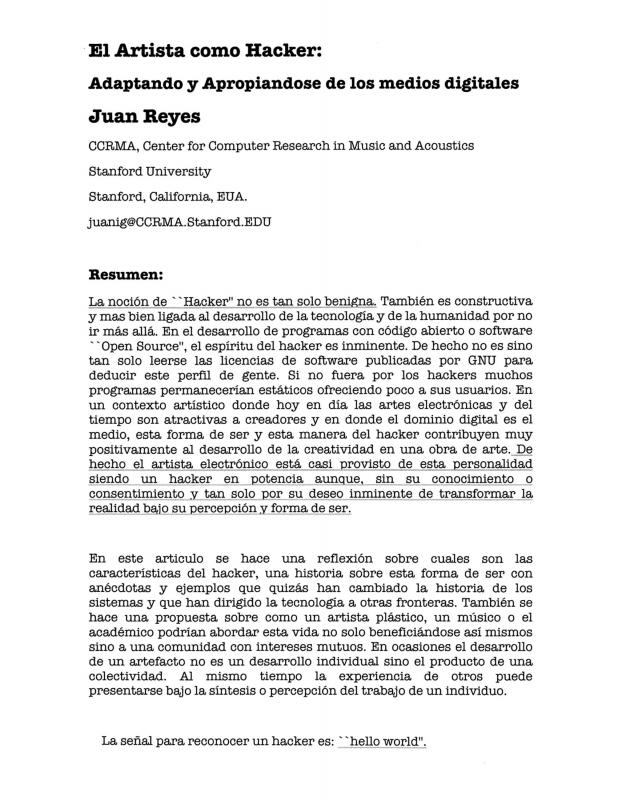This article is relevant because it explores a recurring problem in Colombian history: violence as a catalyst of social dynamics. The critic and historian José Hernán Aguilar (b. 1952) delves into one period of the country’s history to reveal connections between the early development of cinematography and its subsequent transition to “experimental” works (see “Historia del Video arte en Colombia” [History of Video Art in Colombia], doc. # 1130869) that weave together history and memory in a country that has been devastated by incessant violence. In the brief (and unexplored) history of electronic media in Colombia, this article reflects its author’s interest in the temporary conflict between “traditional” and “local” forms of expression in terms of the European musical heritage that can be heard in Colombian music academies and schools.
Aguilar’s impressive career has made him a respected figure in Colombian art circles. He has been a spokesperson for the Banco de la República at Arte y Análisis Visual [Visual Art and Analysis] (1989-1997), a member of the Comité de Artes Plásticas [Visual Arts Committee] at the Instituto Colombiano de Cultura [Colombian Cultural Institute] (1988-1990), and has served on the jury at a number of Biennials at the Museo de Arte Moderno de Bogotá (1988, 1990, and 1992). His accomplishments include his research on the history of medieval art, photography, and contemporary art when he was an associate professor at the Universidad Nacional de Colombia. Juan Reyes (b. 1962) claims that composition for electric acoustic music was ignored in Colombia due to a lack of interest for a period of nearly twenty years; and especially because it was thought to have little impact in local art circles. Reyes presents a chronological sequence of events, starting in 1960, to express his critical thinking. He discusses artists such as Jacqueline Nova (1935-1975) and the potential for a Colombian transcultural heritage steeped in contrasts that could spawn new forms of composition that are not necessarily of a musical nature. Rather like a hacker (see “El artista como hacker” [The Artist as Hacker], doc. # 1099561) who is always in perpetual motion, using what he finds to blend “available” local and foreign material and then subvert it. Electric acoustic composition and music in Colombia are constantly being questioned and continually reinvent themselves at events like the Festival de Música Contemporánea [Contemporary Music Festival] (1990) and Colón Electrónico [Electronic Columbus] (2002), both of which were held in Bogotá.


